VMworld US 2016: The Day 3 Buzz
No General Session today so straight into sessions
Virtual SAN Management Current & Future [STO7904]
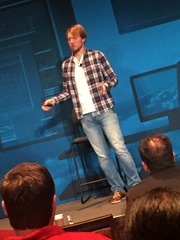 Although I’m fairly up to date with the new features of VSAN I wanted more of a peak into the future. VSAN Architect Christian Dickmann was one of the initial developers for VSAN and has done an incredible job bringing VSAN to market.
Although I’m fairly up to date with the new features of VSAN I wanted more of a peak into the future. VSAN Architect Christian Dickmann was one of the initial developers for VSAN and has done an incredible job bringing VSAN to market.
As a quick summary of the vision, VSAN is bringing “appliance like experience” on your choice of hardware, different storage policies per VM.
HCI is the driver for further revolution in simplicity, the next stage for VSAN is to double down on simplification and this wasn’t just for VSAN but for vSphere as a whole. They are questioning every knob in the vSphere + VSAN universe and seeing if they can make it simpler.
The biggest simplification opportunities include:
- install / upgrade for both software and hardware
- setup of the entire vSphere stack
- introducing infrastructure analytics
- take data centre management to a new level
Christian went on to say they are thinking about this by being able to provide both Choice and Simplicity. You can chose your hardware and yet still get the same simplicity of install and operations.
The theme was not really about just VSAN and this was very good to hear, so much more integration between products planned and a huge focus on automated ad simpler deployments.
He then went through 6 demos.
I had written notes but then Duncan posted a blog and wrote about them in more detail.
Have a read through his post for the demo details and I’ll just add commentary: http://www.yellow-bricks.com/2016/08/31/sto7904-vsan-management-current-futures-cdickmann/
1st demo: HCI Installer
Basically doing what Nutanix has done for automated setup to VSAN and vSphere when you don’t have a datastore to install a nested vCenter . This is targetted at POCs / MGMT clusters / isolated deployments. Nutanix by design doesn’t do anything vCenter deployment related but I would think there would be no reason you couldn’t do the same VCSA deployment on any platform, hopefully the steps VMware use to do this will be made available.
2nd demo: Simple VMkernel interface creation
Like this.
3rd demo: Firmware Upgrade
Again, what Nutanix does very well for its own solutions but if you’re using VSAN, there is a far greater hardware choice so good to see this is coming.
4th demo: VUM Integration
VUM is crying out for full integration into the Web Client and simplification of the baselines which can become difficult to manage, glad to see this is coming to vSphere where you can just say “get me the latest version”.
5th demo: Automation
VSAN aiming to be 100% manageable via PowerCLI, I really thought this would have been done already.
6th demo: VSAN Analytics
Cloud Connected VSAN Health looks great, compare my environment to the KB articles and tell me if I have a problem. This has been far too long in coming. I know a company called Runecast is doing just this already and Cloud Physics can sort of do some of this. . I really hope this is extended to everything. I wants alerts when I am affected by any KB known issue. You can see the alert and then click on the “Ask VMware” button which takes you directly to the KB article.
What is also interesting is VMware is then able to find patterns of issues from the anonymised data sent to Cloud Connected Health from its customers to work out common problems. Phone functionality may freak out some companies but I’m hoping this can be done in a way that makes it usable for the enterprise.
VMware is a bit late to the simplicity party but I’m liking the major focus on it now. It is a major customer pain point and adoption killer. Want to know why only 20,000 of your customers out of 500,000 use vRealize Automation, the complexity is the killer.
I’m surprised this focus across the product suite wasn’t highlighted in the keynote, this would give VMware customers something tangible to hold on to that implementation difficulties are being worked on. Sometimes it is these small things that make customers more happy and loyal customers rather than the cloudy/containery hype.
From what I’ve heard VSAN engineering is one of the stars of VMware at the moment, they re being very active in not only improving VSAN but getting their hands dirty fixing either deployment issues or manageability issues in other vSphere products. I’ve heard some other BUs say to the VSAN team a new feature can be done in 2 years and the VSAN team is able to build it much quicker. They are seeing the value of simple installation and management which customers want and forcing the rest of VMware to get on the band-wagon, I hope they continue to shake things up!
I’m sure this is possibly slightly unfair on the rest of VMware but we have seen products taking absolutely ages to evolve so if someone is hurrying things up and doing a good job to bas that inertia, I say go for it!
Lunch
I decided to sit down at a few different tables for lunch and just ask random people what they thought of VMworld, VMware and what they are working on. Two AirWatch customers spoke about using it to manage iPads in a hospital so doctors can get patient signatures at the bedside for consent, interesting.
Then I managed to speak to someone who manages 1500 workstations across 3 deployments all running on…..VMware Workstation! Yes, an audible “What” from the rest of the table. Its a test suite for an application they build for installation at customer sites and they need to have all possible combinations to do the testing. This is obviously a nightmare to manage, they couldn’t run it on their production vSphere environment as it needs to be separate from it and they are looking at either vRealize Automation or App Stacks to help with this. Good luck!
Lunch and food generally has actually been rather good, Kudos to Mandalay Bay
Open Source as Critical Ingredient in Enterprise Computing [CTO9606-S]
I was interested in this session to get a take on how VMware’s new Chief Open Source Officer, Dirk Hohndel, sees the role of open source in Enterprises where I’m seeing more and more adoption. Interestingly there were only 30 people in a large room, does this indicate not much interest in open source software (OSS) or just a time that was during lunch?
Drives the Internet
Dirk started by saying open source software drives the internet, the more you head towards the infrastructure, the more you find open source.
Amazon, Google, Facebook etc. use open source as the base of their business, Yahoo runs on FreeBSD.
The major companies that use the internet are also therefore the developers of the infrastructure of the internet. By infrastructure, Dirk includes web servers such as Nginx or Apache.
For these web companies, their number one concern if how quickly can they scale out and how quickly can they get the response back to the user.
As Facebook and Google were founded by engineering minded people, they found they would be better able to control the user experience if they could write the software and have control all the way down to the network stack to optimise it. A group of knowledge has built up to do this which has been shared leading to the massive rise in open source.
To the Enterprise
Dirk then took the conversation to the enterprise data centre. 20 years ago all internal mail was Notes / Exchange and external mail was SendMail. Enterprises even 20 years ago were already running open source. DNS/BIND are open source software packages that enterprises have been using forever, standards such as SMTP, FTP & DNS were developed as open source and used by all enterprises.
The use of Unix and then the switch to Linux created a body of tools that were common and open.
Investment banks were also one of the first users of Linux and open source. it wasn’t about lowering costs but rather having complete control of the stack where milliseconds shaved off a transaction could mean millions of dollars. Being able to understand each network packet and which CPU core it sits on and where it then flowed too were critical to trade quicker.
So some of the start of open source in the enterprise was led by financial companies, other companies started to look at OSS more driven by cost, many were rather dissapointed, they thought getting enterprise software for free would be great but there’s a lot involved from a cost point of view than just the initial software cost.
Tools
In the tech bubble, lots of open source companies were started, automation also drove open source with multiple scripting languages.
Not only the tools they use have become open source but what they do with them has become open source, such as cook books or Travis CI. People were able to look at lots of different projects and pick the best parts and then reassemble them. This led to best practices for running a DC, make it reliable, predictable.
Enterprises no longer have questions about whether OSS should be allowed but rather which company are they getting it from from a trust perspective.
4 out of 30 people in an enterprise open source session say they do DevOps, rather interesting as usually we think DevOps is very OSS focused.
Coding
OSS allows you to audit code & hunt bugs down without paying for it although in reality this hasn’t always happened, such as highlighted by the recent issues with OpenSSL/Heartbleed. There is a push from the OSS community called the “Core Infrastructure Initiative” to invest time and money to improve OSS.
Back to enterprise use and software that builds on open source. Most OSS projects follow the 80/20 rule, OSS devs do 80% of the innovative work of the stuff that is fun, new etc. The last 20% is the hard graft to get it working for all customers in all scenarios, this 20% by vendors is what making OSS stuff ready for production.
A lot of people don’t realise the amount of open source software running in their data centres already (or mission critical workloads running under their desks!).
Every developer also becomes your last line of security defence, it is their responsibility to create safe code.
Role of Enterprise Software Companies
Companies like VMware can help with creating OSS, they have lots of experience on how to deploy and run software in the enterprise, bringing the innovation , speed & agility of OSS into products that can safely be deployed and managed. Examples such as vSphere Integrated Containers (VIC) and vSphere Integrated OpenStack (VIO). I heard from someone else that VMware can afford to do VIC and VIO as OSS because you need to have vSphere underneath so there is a revenue model.
All OSS is done for profit at some point, vested interest by contributors which they hope will influence the users of the OSS benefitting the larger ecosystem.
VMware doesn’t have plans to open source other existing products. VMware is one of the top 10 contributors to OpenStack and other things like Open vSwitch.
Dirk wrapped up saying the OSS movement brings three groups of people together, the OSS community, customers and enterprise software companies.
It was an interesting wide ranging walk through OSS, I was surprised it wasn’t well attended.
VMware Chief Technology Officer Panel – Trends and Futures [CTO9943]
VMware CTOs, Shawn Bass, Ray O’Farrell, Paul Strong & Chris Wolf took to the stage to give their perspectives. The role of a CTO is two fold, looking outward to understand technology and business trends to define a companies strategy and then look inward to direct that strategy internally and also to connect customers to R&D.
I had been fortunate recently to interview VMware Europe CTO Joe Baguley so it would be interesting to see what his colleagues said.
Introductions from everyone, they see their role as to “Drive thought leadership and accelerate technology leadership.”
Ray: Focused on digital transition, cloud, multi-cloud, new apps, containers, DevOps, take the same abstraction of hardware virtualisation and apply it to abstract clouds.
Shaun: Seen plenty of bad user interactions, wanting consumer simplicity with enterprise security. Users wanting self service, push button approach, getting data quickly, combining web, windows, mobile apps together
Chris: IT people generally started managing desktops and then tried to get out of it as quickly as possible! EUC is now becoming strategic rather than connecting just employees to data but now also customers. Also focused on enterprises operating multiple clouds.
Paul: How everything comes together, driving the VMware simplicity of mission, bringing clouds together, helping people not having to worry about infrastructure. We’re also moving from managing just virtual machines to managing virtual cars, virtual aeroplanes, virtual pumps, all these virtual things to model physical things.
There was talk of moving from centralised computing with cloud to more edge analytics for IoT. There will be too much data for all IoT devices to send data centrally. The devices themselves will aggregate and possible crunch the data to make it more efficient and do some actions before sending it to the cloud.
They see IaaS becoming the building block for PaaS and Serverless. You still need IaaS but it will be abstracted away but is still very important.
There was a question about whether the format of isolation, be it VM/container, will not matter in 10 years? There isn’t a time but sure, this will happen, now you don’t care about where Intel put the memory boards on their latest chip but you used to care.
Saving the state of data will become cheaper and managing it will be done with software distributing things.
An interesting point was they see an increased amount of attacks on containers as it becomes more mainstream. If you have a poorly patched Linux OS you could be in trouble so either this needs to be factored in, vSphere already provides very secure silicon isolation.
Another question about surveilliance which led to a discussion on us becoming more happy to give up our privacy for more functionality.
As for security they all agreed that breaches are going to get much worse until it gets better with new software and analytics to even find out of you have been compromised.
An Industry Roadmap: From storage to data management [STO7903]
Next up to another storage session with one of the fathers of VSAN, Christos Karamanolis, who is also a VMware Fellow, I’ve heard Christos speak a number of times.
Christos started reiterating that data provides tremendous business value potential with a huge uptick in the amount of data stored.
Storage is not going to traditional storage arrays, analysts say disk arrays are rapidly declining compared to the amount of data produced. This is due to the rise of Software Defined Storage, either via hyperscale server SAN storage or enterprise server SAN storage.
Data is also becoming more mobile in a hybrid cloud world which is an IT nightmare, CIOs have no idea what data goes to AWS/Azure?
Today’s storage products do not meet the requirements of the evolving IT industry, HCI overcomes legacy limitations with a seamlessly integrated architecture.
Christos talked about Data LifeCycle Management.
Storage products currently come with data service tightly coupled with physical infrastructure, things such as snapshots/clones, replication, duplication, checksums, encryption etc. cannot be used across hybrid IT infrastructure and often can’t be done on an individual VM level.
He says it doesn’t have to be this way, we need to decouple data services from physical boundaries.
VMware already does this with vSphere Replication which is storage agnostic. Layer on SRM and you can coordinate your DR at scale with different storage hardware.
He went through what he called “The Data Storage Disrupters:”
- Public clouds with cost effective archival storage, range of availability options. They don’t meet all requirements for enterprise primary storage but can be used for DR to the cloud. This is what vCloud Air / Network DRaaS is which is the most revenue generating part of the vCloud Air Network. You can also do DR between public clouds, he showed a demo
- New compute consumption models with pay as you go infrastructure and software as a service with data escaping the boundaries of IT org.
Portable Snapshots
He then said what about a long term idea, the portable snapshot, imagine if they could be decoupled from storage, could be mobile cross physical locations, archived anywhere, recovered anywhere. You can have local snapshots, replicas on-prem for analytics and remote copies for DR or archive. VMware is working on building this so you can even copy VM snapshots to AWS / Google.
This means you can take an existing VM, back it up to AWS, VMware will handle the data conversion. You could store it on Glacier cheaply. You could then restore that data either on-prem or even into S3 convert the data again and here’s the kicker, power it on as an EC2 instance! That’s cloud portability. Cross cloud VM migration, add that to NSX with cross cloud networking and you could create a number of interesting solutions for your vSphere VMs.
Now to do this at scale, we need data lifecycle management all driven by policy across locations/storage. We need a global catalogue of data, diverse recovery worklows, with granular recovery for nearline, offline and DR.
Exoclones
Then Christos went on to talk about a distributed file system for cloud native apps, called VFS which would sit on top of VSAN and provide a file system that could massively scale.
The portable snapshot functionality would be there to for example be able to better dedupe and manage container images. This is called Exoclones. If you are refreshing thousands of containers in multiple sites, currently you can’t do block level differential updates, Exoclones would give this to you. You can also use Exoclones to do rapid copies of Big Data, Christos did a demo of just this.
I had previously seem some slides at the Office of the CTO booth in the solutions exchangne so this now made a bit more sense.
Data Governance
Christos closed with covering data governance, how do you track and control all that data, it is going to be a nightmare when it can be in so many places.
He sees a future soon with other decoupled data services which will be in software and portable:
- end to end data integrity: checksums
- space efficiency: dedupe / compression
- multi-tenancy: access control, isolation
- security: encryption, attribution
I had head Christos speak previously on how VSAN was architected to be a common storage platform for any number of things, from VMs, to native file/object services and also persistent storage for containers but this was so much more.
I’ve been impressed with how well VSAN has been developing into a credible storage platform, in fact lets just say platform that happens to store stuff. Sure, as a pure HCI SAN it is missing some functionality and its easy to poke holes into any product but I do believe the VSAN design is a solid idea and they are really thinking about future flexibility ad reinventing storage as we know it.
Integrating the policy based management from the beginning elevated it from just another VSA for VMs and seeing the ideas today shows how important it will be when we consider future scale.
This session together with the previous VSAN futures session opened my eyes to many more possibilities, well done VSAN team!
Office of the CTO
I had seen some of the other posters at the Office of the CTO stand, some were referenced in the VMware Research session I attended yesterday.
Enabling vMotion with Passthrough SR-IOV Network Devices for Latency Sensitive App
CLOVE: Congestion-Aware Load Balancing from the Virtual Edge
P4: Programmable Data Planes
Corfu Distributed Shared Log
Sessions I wanted to attend but couldn’t due to too much on at the same time, need to watch the recordings or find out what was said:
- Cloud Operations With Photon Platform Workshop [ELW-1730-USE-2]
- The vCenter Server and Platform Services Controller Guide to the Galaxy [INF8225]
Other stuff I learned today:
vSphere Integrated Container & Docker
The vSphere Integrated Containers Docker endpoint is just one connection point to the container mangement system, they can build others if they need to. As VIC currently only uses native Docker APIs it can’t be used for other clustering solutions which need an agent. This could therefore change as VMware could write any other connection points if they want to. Opens up the possibilities somewhat of VIC being used by other container clustering or management solutions other than Docker.
IoT
I had said yesterday I would have a look at the IoT zone in the VM Village, here are pics of what was being shown:
Internet of Fizz
The Smart Factory
Proactive Healthcare
Smart Homes
VMware Customer Appreciation Party
Then is was time for the official VMware party which was held at the Las Vegas speedway. This was hugely successful when VMworld was last in Vegas in 2011. It was 30 minutes by coach away so not so convenient. They had a number of games and you could take a turn as a passenger driving in a car around the track, max speed was 90Mph which didn’t feel particularly fast on the track. It was OK, I didn’t quite feel the love for the party this year.
The bands that played were Capital Cities and Fall Out Boy.
Afters
Coach back to the Mandalay Bay and then just bumped into the awesome group of people we consider as our community. Spoke to Stu Miniman about everything, what a great guy!

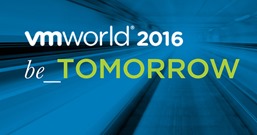


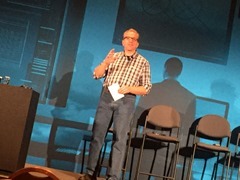
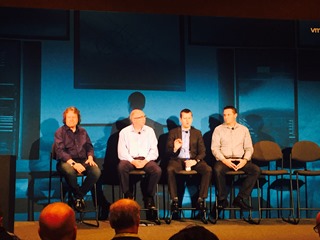
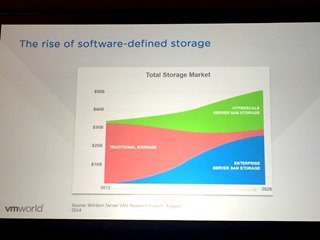
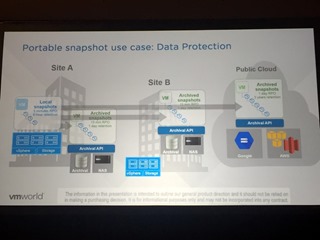
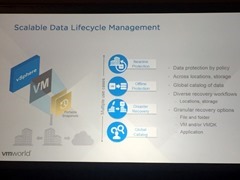
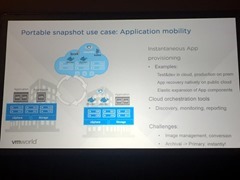
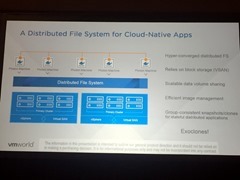
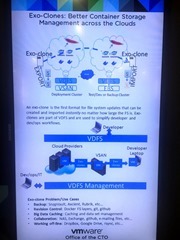
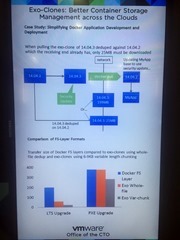
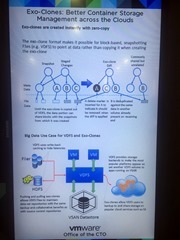
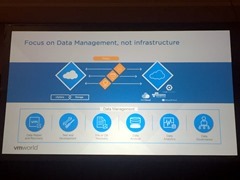
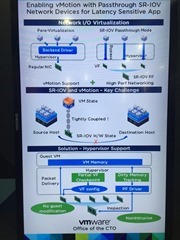
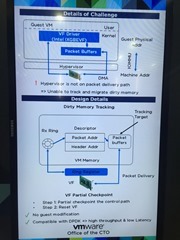
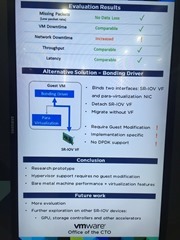
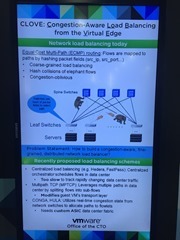
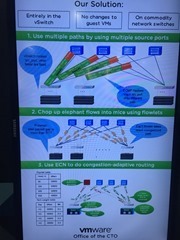
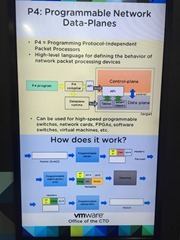
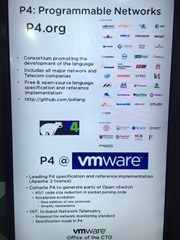
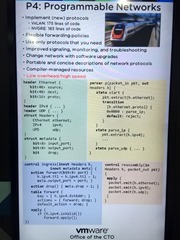
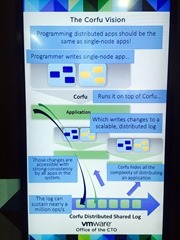
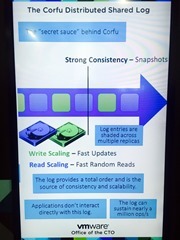
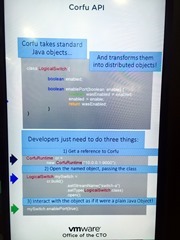
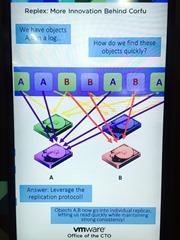
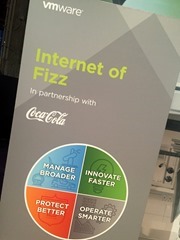
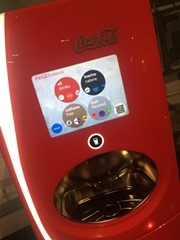
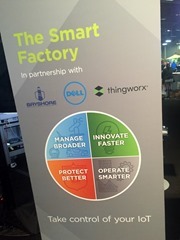
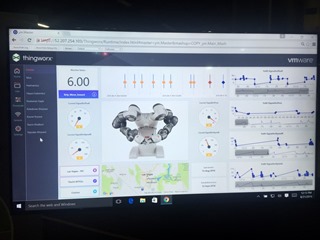
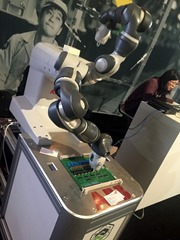
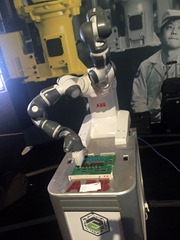
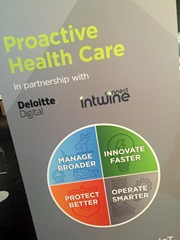
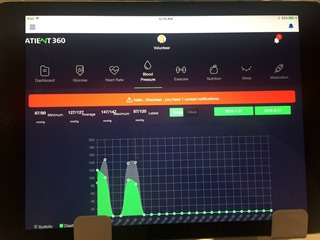
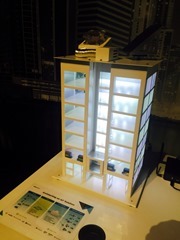
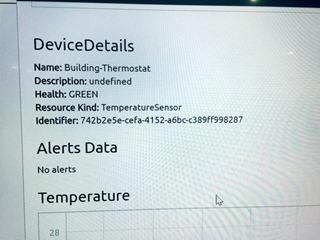

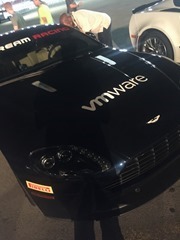

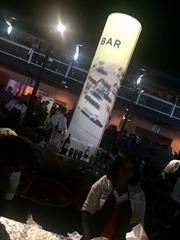
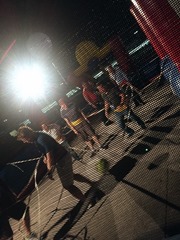
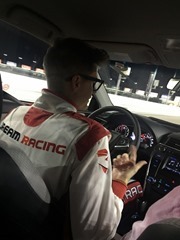
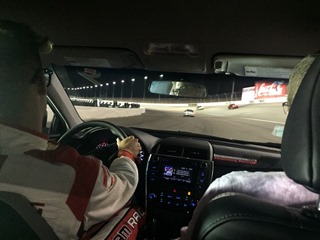
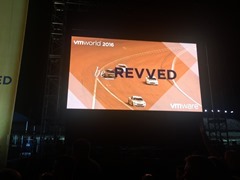
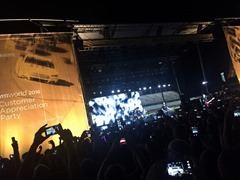

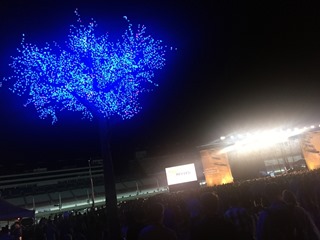
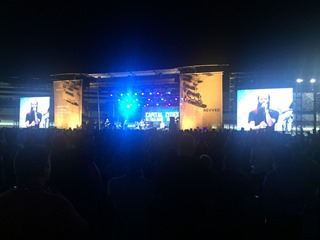


Recent Comments